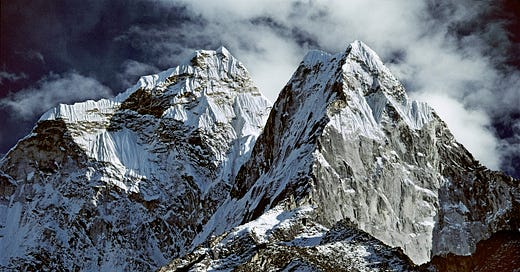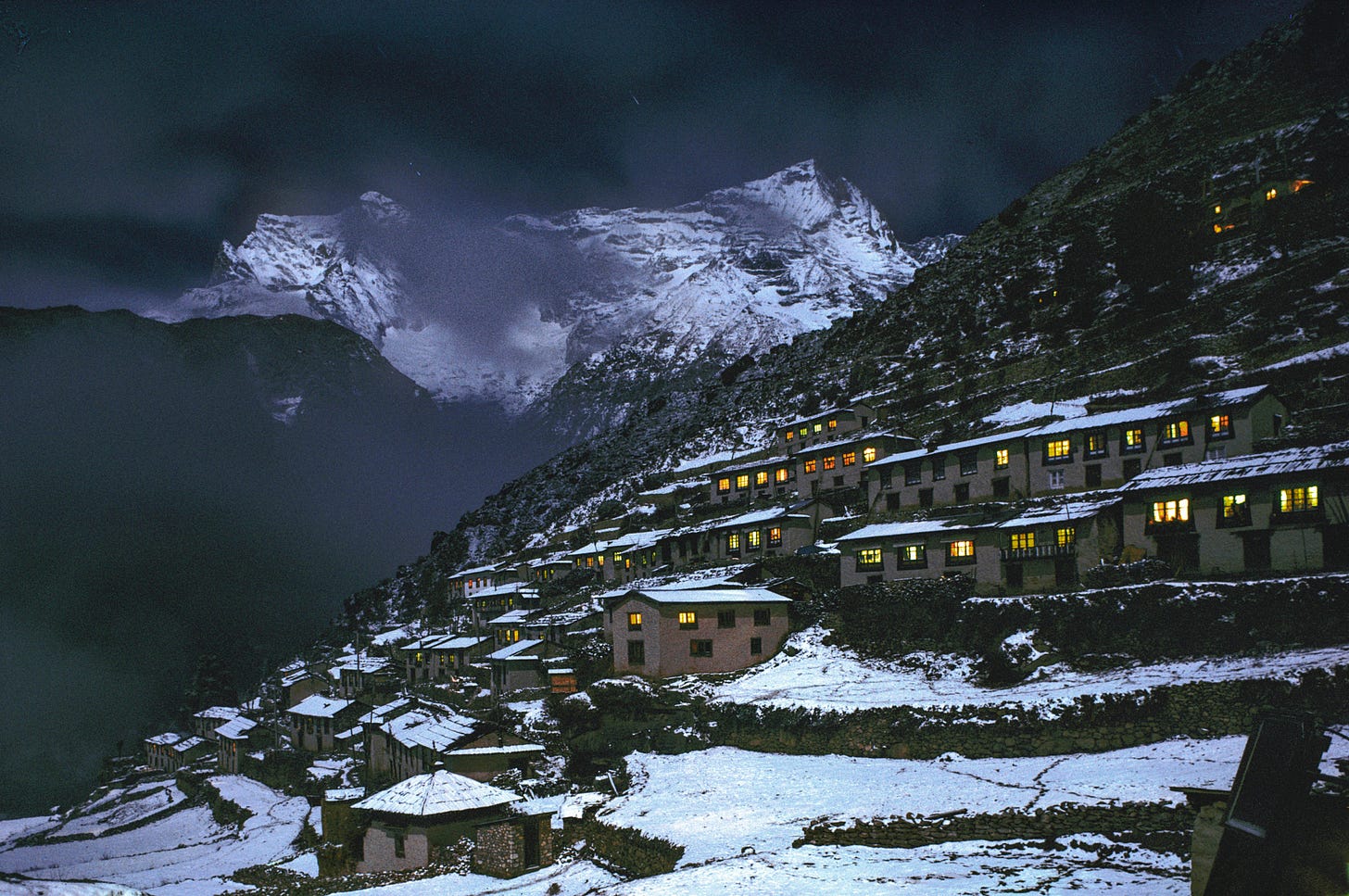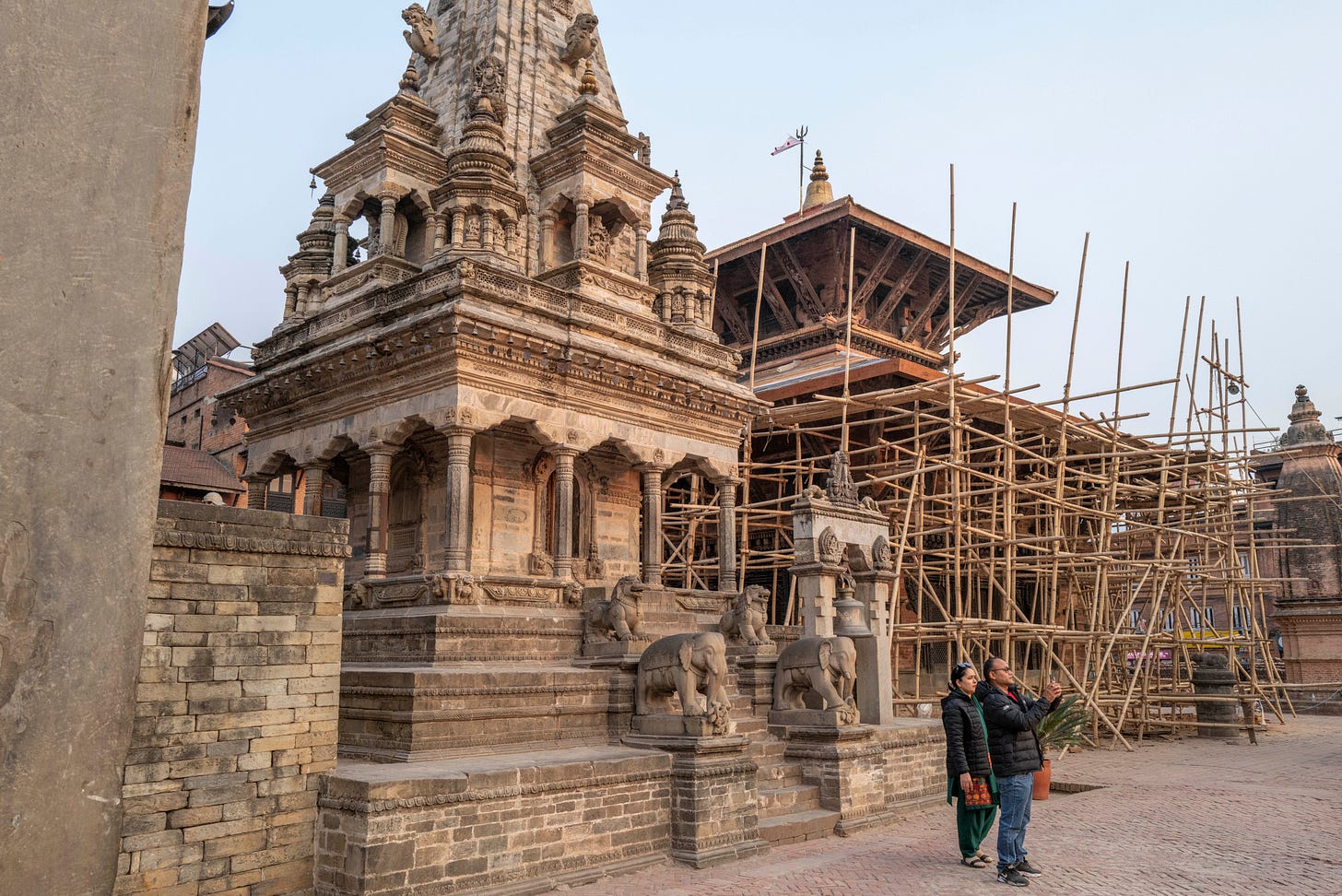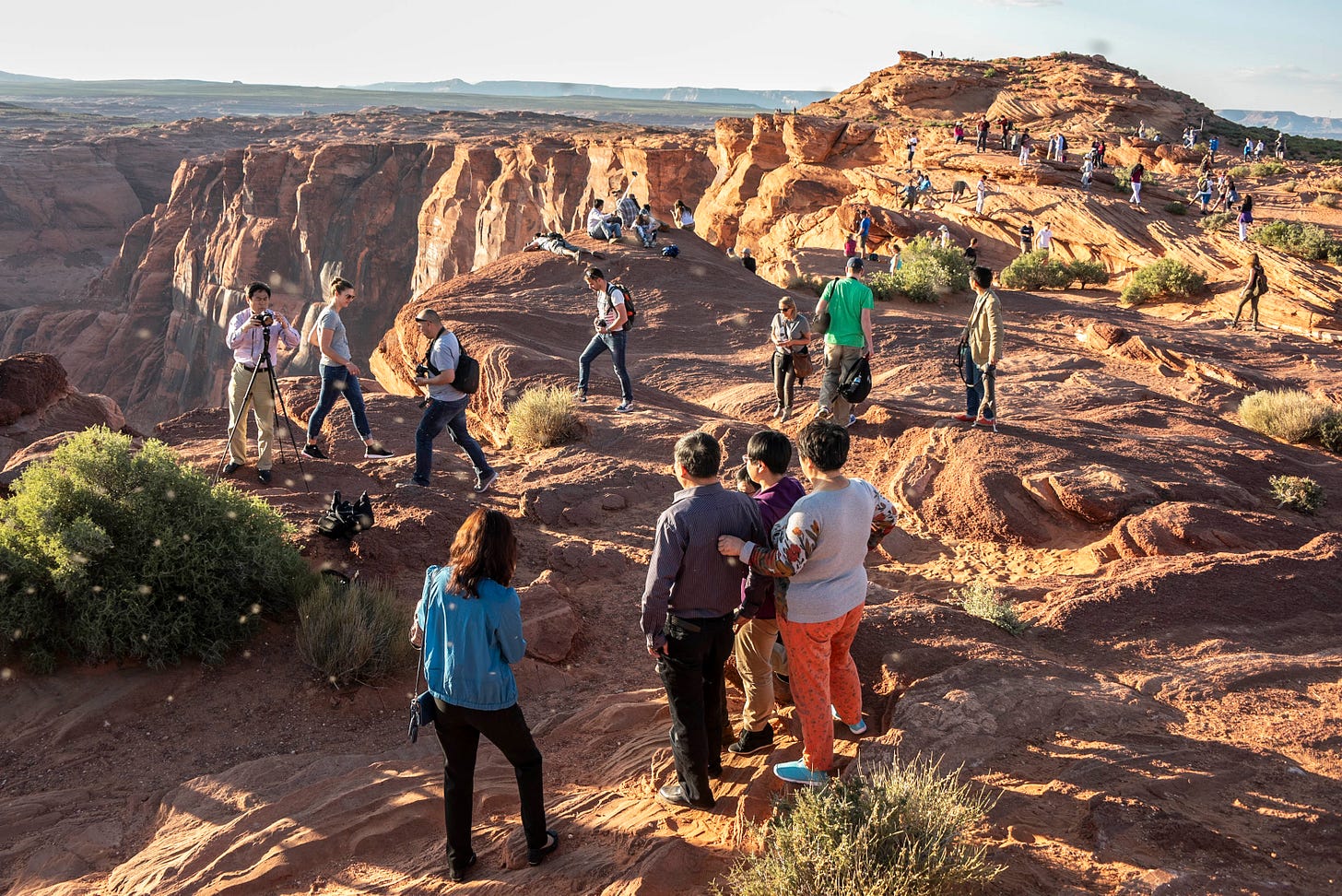If only you’d been here five years ago. How often have I heard this irritating and pointless observation? You can only experience the now and experience it for what it is. I know, I’m starting to sound a bit New Agey. My inner Yoda is coming out!
I wrote this several weeks ago, and since then, I have spent a month in Morocco, an experience that compounds my experiences in Asia. I was last in Morocco over 35 years ago. The country has changed! Also, in the past week, there has been a lot of press about the demonstrations targeting over-tourism throughout Europe. More about that in my next post, but here are some relevant thoughts.
The last time I was in Kathmandu was in 1987. I took a group of photographers up to Everest base camp - in winter! Lunacy on reflection, but after a helicopter evacuation and a couple of heavy snowstorms, everyone agreed it was one of the most memorable experiences of their life. Adventure starts when things go wrong!
My previous trek to Everest was in 1975 when I was photographing the successful British Everest Expedition for the London Daily Mail and Paris Match. Since then, nothing much had changed on the trek up from the grass landing strip in Lukla through the Solu Khumbu toward Everest base camp. There were a few more smoke-saturated tea houses and maybe a few more trekkers, but that was about it, apart from one monumental event that took place on our return through Namche Bazaar, a cluster of buildings in a high amphitheater at over 11,000 feet that has always been the most important settlement in the region.
In those days, to call it more than a settlement would have been an exaggeration. The monumental event—the installation of a generator and the arrival of electricity. For centuries, the only light had come from wood and yak dung fires, butter lamps, and, more recently, oil lamps, and now, overnight, light was available with the flick of a switch. I stood in sub-zero temperatures and made two 15-minute exposures of twinkling lights that changed a traditional lifestyle forever. Of course, in those days, I was shooting on film, so I had no idea if I had successfully captured the shot until I got home several weeks later. I used the exposure indicated by the meter in my camera. I guessed that the light and dark areas in the scene would approximate to the 18% grey to which all exposure meters are calibrated. The exposure time was so long, and the temperature so low, that bracketing the exposure was out of the question. Now that we have instant feedback with digital photography, I often wonder how our nerves stood the stress. Miraculously, I made two perfect frames!
Today, Namche Bazaar is a bustling hub with shops, hotels, Internet cafes, and even an Irish pub! Hundreds of trekkers pass through, hoping for a glimpse of Everest. If only they had been here 40 years ago!
As for Kathmandu, driving into town from the airport last week was like visiting a place I had never known. The Kathmandu Valley that I knew was comprised of three distinct towns: Kathmandu, Patan, and Bhaktapur. Now, it’s become one long urban sprawl. And the traffic! Motorcycles dominate, and they have minimal regard for driving etiquette. I thought India was bad, but Nepal is its equal.
Thamel was a district of cafes, guesthouses, and local shops woven together by a honeycomb of narrow streets made for walking. This was a haven on the old hippie trail, and back in the 1960s and 70s, it was the place to be, with the Kathmandu Guest House at its hub. Not a lot has changed physically in Thamel. The Guest House has expanded to become unrecognizable; every other shop now sells trekking gear, North Face, and Patagonia rule although their origin is debatable; there are as many Italian restaurants as Nepalese, but the overwhelming change is the traffic. These narrow pedestrian-scale streets are often barely wide enough for a taxi, and no actual sidewalks make any walk a potentially life-threatening experience.
All this traffic has resulted in another life-threatening problem: pollution. If you climb up to Swayambhunath, the so-called Monkey Temple, you can look down and see a thick layer of smog hanging over Kathmandu’s urban sprawl.
An earthquake in 2016 devastated Nepal. Whole villages were obliterated, and hundreds of buildings were damaged or destroyed in the Kathmandu Valley. Evidence of this is everywhere. Places that were free to wander now charge a fee to enter. The daily entry fee for Durbar Square in Kathmandu and Patan is $7; in Bhaktapur, there is a $15 fee for even entering the town. You never really know where these fees are going, but hopefully, they are being funneled into restoration projects.
Speaking of pollution, Delhi and Agra are particularly bad. My first visit to the Taj Mahal was in 1975 on my way to Nepal. I made several visits during the 1980s and 90s, photographing the architecture of Shah Jahan for an exhibit at the Los Angeles County Museum and a book published by Thames and Hudson. I got to know the Taj Mahal intimately. No crowds were waiting to enter the grounds. No security searches. No forest of selfie sticks to negotiate. You could stroll in and wander in peace. By the time of my visit in 2016, everything had changed. Security resulted in long lines waiting to enter, and these had increased alarmingly last month when I waited for almost 45 minutes for my daughter to get through the women’s security line.
Even 50 years ago, there was pollution in Agra, and however problematic this may have been for respiration, it was a boon for a photographer, as you can see in some of my early photographs of the Taj at dawn. However, back in those days, the pollution dissipated shortly after sunrise. On my last two visits, the pollution has lingered for most of the day and has been so thick that the sun has barely been able to penetrate.
I often question my role in all this, not the pollution but the crowds! I have been promoting tourism as a travel journalist for over 40 years, and it has often come back to bite me. Nevertheless, I firmly believe that tourism can rid the world of a myopic vision that is the root of many of our current global problems. My workshop company, Lumaria Workshops, with business partner Andréa Johnson, has partnered with Mejdi Tours, whose mission is to create a more peaceful and interconnected world through travel, changing the face of tourism through a socially responsible business model that honors both clients and communities.
An ever-expanding global population and the increasing ease of international travel will inevitably attract more people to the world’s most interesting destinations. Instagram alone feeds the selfie generation with endless ideas for creating follower-generating posts. Some of the world’s great scenic highlights have been forever changed by crowds wanting to show the rest of the world where they have been. Ironically, they are usually too busy looking at their phones, their backs to the very thing they came to see.
Look at Horseshoe Bend near Page, Arizona, with over a million Instagram posts. Once, this was a spot for locals to visit for a quiet picnic. Now, thanks to social media, it has become so overrun by visitors that paved parking has been constructed together with a viewing platform and safety barriers. When I visited in 2015, it was still relatively unspoiled. If only…
It is naive to think we can change this. We cannot reduce the crowds, but we can, at least, work to introduce people to the world responsibly and thoughtfully.
Places may change, for better or worse, but it is never too late to visit. What you experience today may not exist in 10 or 20 years. I encourage you to travel, but do so meaningfully, not just to show the world how cool you think you are.
You can read about more of my travels and adventures in PASSAGES, a memoir available at Lumaria Editions.
Also, I give regular photo tips on my Instagram page at bobholmesphoto. Hope to see you there.
Pet peeves
Recently, I waited in a long line to buy ice cream. This was not just any ice cream, it was gourmet ice cream in various flavors. The young(ish) couple in front of me asked for a taste of one of flavors, then had a discussion about its merits before asking for another taste, followed by an inevitable discussion. This continued through at least six flavors over several minutes. I couldn’t take it any longer. Cheered on by the rest of the line, I asked them to make a decision and the man tried to make me feel as though I was the one in the wrong. Good luck with that!
And that’s it for this week! Feel free to like this post, leave a comment, or share it with a friend. See you back here soon!










